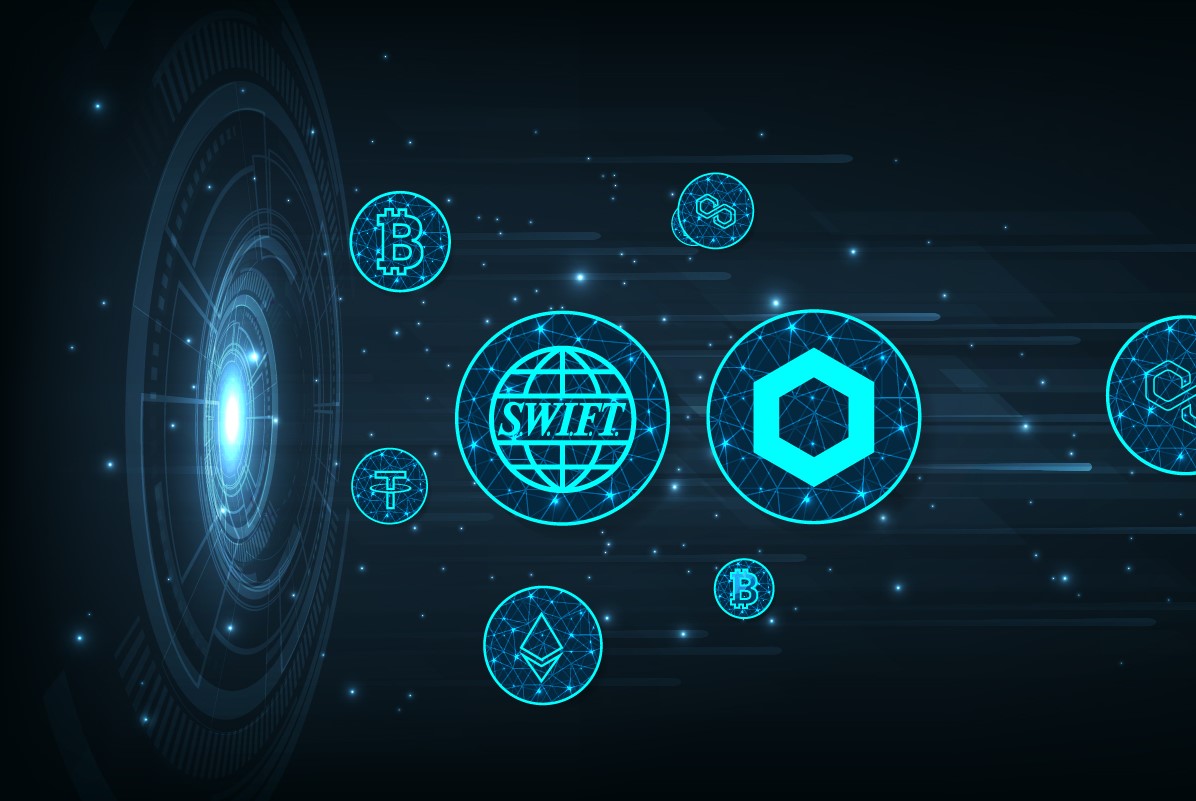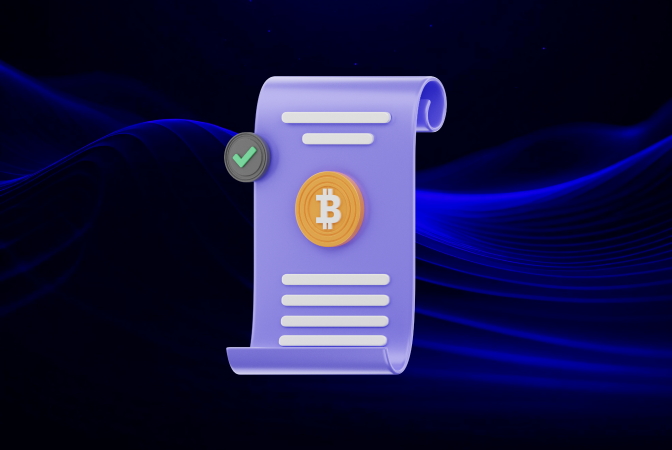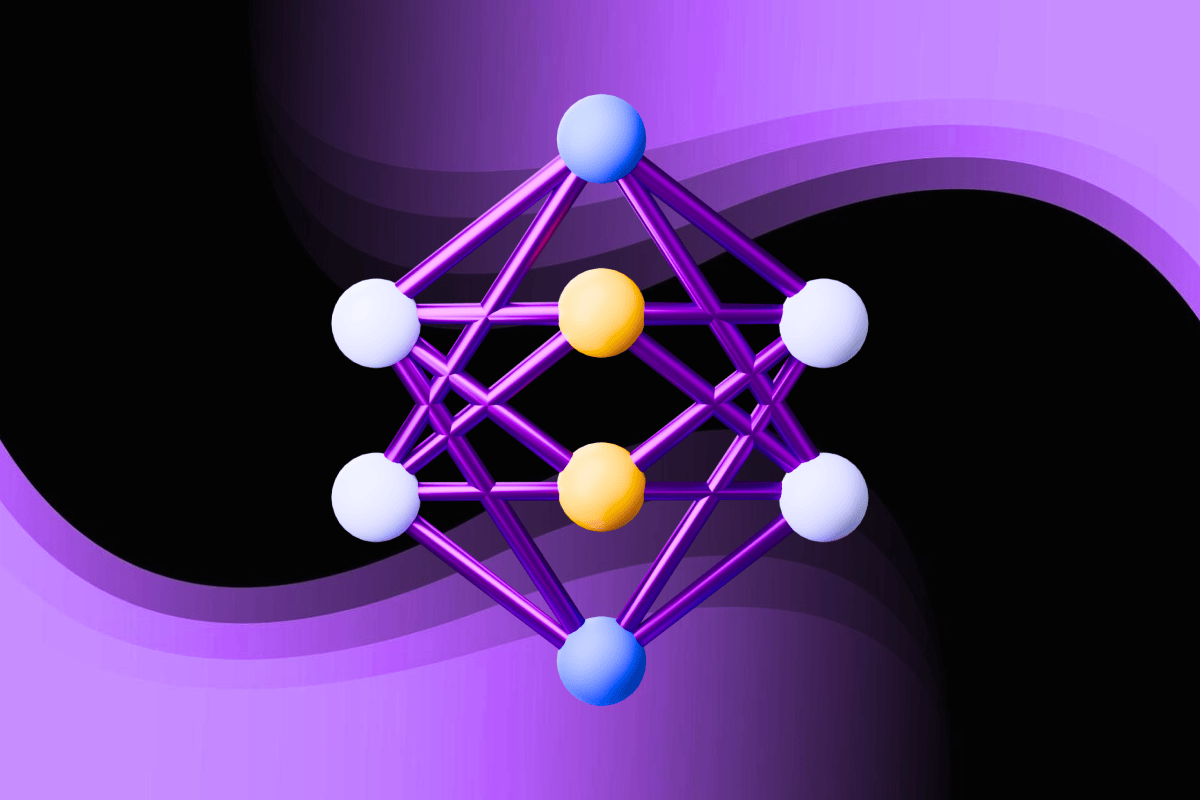SHARE THIS ARTICLE
SWIFT Embraces Crypto: Chainlink Integration and How It Helps with Tokenized Assets & RWA

Imagine a world where financial transactions flow seamlessly between traditional legacy systems and the cutting-edge world of cryptocurrencies, enabling access to a variety of financial products and services on both platforms. Where you can benefit from the best of both worlds - the efficiency and innovation of blockchain development, and the stability and regulation of fiat.
This is the vision that SWIFT, short for Society for Worldwide Interbank Financial Telecommunications, is trying to realize with its recent integration with Chainlink, a leading blockchain oracle network and crypto data provider.
In this comprehensive blog, we will delve into the SWIFT-Chainlink integration, examining its potential, challenges, and impact on Real-World Assets (RWAs). We will also illustrate how this integration can be applied in practice, offering insights into the evolving landscape of the financial industry.
How SWIFT Plans to Leverage Crypto
In a ground-breaking move, SWIFT has teamed up with Chainlink to experiment with the transfer of “tokenized assets” across a multitude of financial institutions and various blockchain networks. Tokenized assets are digital representations of real-world assets that can be traded on blockchains. For example, a tokenized asset could be a share of a company, a piece of art, or even a house.
Tokenization aims to enhance liquidity, efficiency, and accessibility for real-world assets. It allows users to own fractions of assets, expand markets globally, and automate contracts through smart contracts.
To realize tokenization, SWIFT needs to create a common connectivity layer that bridges the gap between traditional finance and blockchain technology. This is where Chainlink becomes pivotal.
What Chainlink Brings to the Table
Chainlink is a decentralized network that connects blockchains to real-world data and systems, such as market prices, weather information, bank accounts, and even other blockchains. It enables smart contracts to access and use any data or service they need to function properly. Chainlink also ensures that the data and services are reliable, secure, and tamper-proof, by using cryptographic proofs and economic incentives.
Chainlink acts as a universal adapter for blockchains, capable of pulling in data from any source, standardizing it, and securely transmitting it between different chains. By integrating with Chainlink, SWIFT can leverage its existing infrastructure and expertise to provide data and services to the cryptocurrency ecosystem. For example, SWIFT can use Chainlink to deliver payment confirmations, exchange rates, interest rates, and other financial information to smart contracts on various blockchains. This would enable new use cases and innovations in the financial sector, such as cross-border payments, trade finance, and asset tokenization.
The Implications of SWIFT-Chainlink Integration
-
Banks welcoming crypto with open arms: Banks are on the cusp of a major transformation. They will soon become custodians of your cryptocurrency, just as they hold your traditional cash today. They will also be able to offer crypto-related services such as lending, borrowing, trading, investing, and staking. This will create more demand and adoption for crypto among mainstream customers.
-
Traditional systems meeting crypto: SWIFT’s familiarity and reliability make it the perfect choice for banks to transfer crypto assets, even across different blockchains. SWIFT will also be able to provide regulatory compliance and risk management for cryptocurrency exchange transactions, ensuring that they follow AML/CTF rules and other standards. This will create more trust and legitimacy for crypto among institutional investors.
-
Oracle services bridging the gap: Oracle services like Chainlink become the critical “bridge” between traditional finance (TradFi) and decentralized finance (DeFi), unlocking their true value. Oracle services enable smart contracts to access real-world data and systems that are otherwise inaccessible or incompatible with blockchains. This will create more functionality and interoperability for DeFi applications, such as lending platforms, derivatives markets, insurance protocols, stablecoins, etc.
Tokenized Assets: The Trillion-Dollar Opportunity
But there's more to this story. SWIFT's experiments extend to tokenized assets, bridging the gap between traditional and digital assets. This has the potential to unlock a trillion-dollar market. Institutional investors are bullish on the tokenization of real-world assets. Over 97% of them believe that this trend could revolutionize asset management and be a positive force in the industry.
However, there's a catch. Central Bank Digital Currencies (CBDCs) and tokenised assets are two types of digital tokens that use distributed ledger technology (DLT) to record and verify transactions. And DLT also poses some challenges for cross-border payments, which are payments that involve different countries and currencies. For example, different DLT platforms may use different technologies, standards, and protocols, making it difficult for them to communicate and interoperate with each other. Moreover, DLT platforms may not be compatible with existing payment systems, such as Swift’s network, which connects more than 11,000 financial institutions in over 200 countries and territories.
Swift’s experiments aim to solve these challenges by using its existing infrastructure as a bridge between different DLT platforms and traditional payment systems. Swift’s infrastructure can serve as a single gateway that allows digital currencies and assets to flow smoothly alongside, and interact with, their conventional counterparts. This means that CBDCs and tokenised assets can be integrated into the international financial ecosystem without causing disruption or fragmentation.
Moreover, SWIFT and Chainlink's experiments aren't just theoretical. Major financial institutions, including BNY Mellon, Citi, Euroclear, Lloyds Banking Group, and SIX Digital Exchange (SDX), are actively involved.
Use cases of SWIFT-Chainlink Integration
Now, let's dive into some potential practical use cases of the SWIFT-Chainlink integration:
-
Transfer on Same Public Blockchain (Ethereum Sepolia Testnet): The first use case will involve the transfer tokenized assets between wallets on the same public blockchain (Ethereum Sepolia testnet). SWIFT is aiming to connect Ethereum to its network, enabling the use of its services like identity verification and compliance screening.
-
Transfer to Permissioned Blockchain: The second use case involves the transfer of tokenized assets from Ethereum to a permissioned blockchain. The goal is to serve as a bridge between the Ethereum network and the permissioned blockchain network, facilitating the secure transfer of tokenized assets between the two environments.
-
Transfer to Another Public Blockchain: The third use case will test the transfer of tokenized assets from Ethereum to another public blockchain. For instance, one party may want to move tokenized assets from Ethereum to Bitcoin or from Ethereum to Polygon. Here, SWIFT will be serving as a hub connecting Ethereum to the target blockchain.
To facilitate all these use cases, Chainlink’s Cross-Chain Interoperability Protocol (CCIP) can provides a secure and reliable messaging protocol that enables the token transfer and the communication between the smart contracts and Swift’s infrastructure.
The Opportunities and Challenges of Tokenizing RWAs
However, the SWIFT-Chainlink integration also poses some opportunities and challenges, especially in terms of tokenizing real-world assets (RWAs), which are tangible assets that exist in the physical world and can be converted into digital tokens on blockchains. RWAs include assets such as real estate, art, gold, stocks, bonds, etc.
Tokenizing RWAs can offer many benefits for both asset owners and investors. For example:
-
Asset owners can unlock the value of their assets by selling them partially or fully on blockchains. They can also access new sources of funding or liquidity by using their assets as collateral for loans or other financial products.
-
Investors can access a wider range of assets that may not be available or affordable in traditional markets. They can also benefit from lower transaction costs, higher transparency, faster settlement, and easier verification of asset ownership and quality.
However, tokenizing RWAs also comes with its own challenges and risks. For example:
-
Tokenizing RWAs requires a reliable and secure link between the blockchain and the real-world asset that it represents. This link is often provided by an oracle development company like Chainlink, which acts as a bridge between blockchains and external data sources.
-
However, oracle services may also introduce new sources of error or vulnerability in the system. For example, oracle services may provide inaccurate or outdated data, or they may be compromised by hackers or malicious actors. Therefore, oracle services need to be carefully designed and audited to ensure their reliability and security.
-
Tokenizing RWA’s also requires ensuring the legal enforceability and validity of the tokenized asset. For example, if a tokenized asset represents a piece of art, who has the legal right to own, sell, or display it? How can the token holder prove their ownership and authenticity of the asset? How can the token issuer ensure that they comply with all the relevant laws and regulations in different jurisdictions?
So RWAs require close collaboration and coordination among various stakeholders, such as regulators, lawyers, auditors, developers, issuers, investors, and users. And by using SWIFT’s messaging system and Chainlink’s oracle network, tokenized RWAs can be transferred and managed across different blockchains and legacy systems. This would lead to innovations in both traditional finance and decentralized finance (DeFi), as well as create more value and efficiency for society and the economy.
Wrapping It Up
As we look to the future, it's clear that the financial industry is on the brink of transformation. The traditional silos that have long separated fiat from crypto, and legacy systems from blockchain, are fading away. SWIFT's forward-thinking collaboration with Chainlink heralds a new era where financial transactions flow seamlessly, and assets, both real-world and digital, become more accessible and liquid.
This integration isn't just about speed and efficiency; it's about empowerment. It's about giving individuals and institutions alike the tools to navigate this brave new financial world with confidence, whether it's through owning fractions of real estate on a blockchain or conducting cross-border crypto transactions with ease.
Post Author

As a distinguished blockchain expert at Codezeros, Paritosh contributes to the company's growth by leveraging his expertise in the field. His forward-thinking mindset and deep industry knowledge position Codezeros at the forefront of blockchain advancements.
With SWIFT embracing crypto, learn about its implications for your blockchain project.
The SWIFT-Chainlink integration can significantly impact the crypto scene. Connect with us to know the implications of any such events on your blockchain project.



